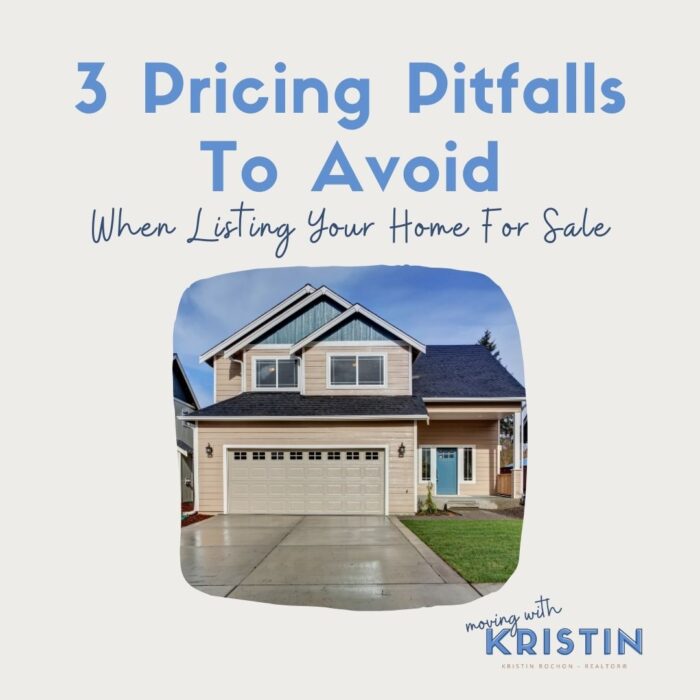Let’s face it, it’s fiercely competitive for buyers these days as they bid on their desired home. Multiple offers is the norm. Whether a listing agent specifically gives you that warning and alert of highest and best deadlines or not, you must always assume that there are other people fighting against you for that very same property. There could be other buyers writing an offer for that property at the very same time as you. You are in competition! If a house looks good and is priced right, it will collect offers, most likely several, and very quickly (sometimes within a hour of listing).
But what a lot of buyers tend to assume is that winning is all about the highest purchase price, when in fact, that is just one of many things a seller has to consider and weigh in selecting what offer works best in meeting their needs and desires.
One of my goals as your advisor and teammate in this process is to inform and educate you on the different cards available to strengthen your offer. Some of these cards may work for you, your resources, your desires and some may not. But I like to at least show you the deck and introduce you to some of the cards so that you can choose to play the ones that work best for you to build your strongest hand.
Overbidding
This is the card that is most often played. You simply take your bid over the list price. Quite frankly, you better be prepared to use this card for a house brand new to market and priced appropriately. It’s just too likely that your competition will be playing this card. But by how much?…you never know what you may be up against. Some people are willing to bid seemingly ridiculous amounts over list price. You don’t know if you are up against one of them or not.
But there is a very important thing to understand about over inflated offered prices…in they end they are really only as good as where the appraised value will come in. A $20,000 over list price offer means very little, if the appraisal can’t match it. And that leads us to the next card…
Appraisal Bridges/Guarantees
If a purchase is being financed, the bank will order an appraisal to determine how much they are willing to loan the borrower towards the purchase of this house. If the appraisal price doesn’t match the agreed to purchase price, then all is not well because it’s most likely that your purchase agreement will have an appraisal contingency in place. This means that if the house does not appraise for the offer amount, the contract can become null and void. The purchaser can decide not to buy for the offer price and the seller can decide not to sell at the appraised value. Negotiations and new agreements then need to be made. Can you see how frustrating and troublesome this can be for a seller after they had their hopes up that they were going to sell for a certain higher price? Now imagine a buyer giving that seller a guarantee right up front that says, we know it may not appraise for the amount I’m offering, so in the event of an under appraisal, I’m willing to bring my own money to the table outside of my loan to make up for that appraisal shortfall. I do realize this is not an option for some people, you may simply not have the funds, while others just don’t feel comfortable in paying more than the bank says that house is “worth”. But you are not the bank…what’s this house worth to you? So many people are playing this card and it is very effective in adding much strength to your offer. Many tend to think of it as just an extra closing cost, a premium that you are willing to pay when you “got to have it” to ensure you don’t drive by two months from now to see some other person mowing that front lawn.
Occupancy (especially Free)
The majority of homeowners will financially need to sell and close on their current home before they are able to purchase the next. However, in this super competitive seller’s market, it is very unlikely that an offer will be accepted contingent on the sale of a current home, especially if that home is not already pending sale. That simply adds another layer of uncertainty and risk to a seller in accepting such and offer because it lines up multiple transactions in a domino affect. So how are the logistics worked out in order for the seller to not be homeless between closing on their current house and the next? It is very typical in this market for the sellers to remain in their home after they sell it, essentially as a tenant, for a period of time. This is referred to as occupancy after closing. This occupancy can be any period of time up to 60 days.
It is very important to take this into account when writing an offer and do your best to accommodate the seller accordingly. If occupancy is needed and important to the seller, it will weigh heavy in their selection of the winning bid. Not only whether it is offered, but for how much. The typical daily rate for occupancy is 1/30 of the purchaser’s new mortgage payment, inclusive of principle, interest, tax and insurance. What’s even better than offering occupancy is to offer part or all of it free to the seller.
Personal Letter to Seller
Selling a home can be very personal and emotional to many people. We get attached to our houses through the memories that were built there. Therefore you can imagine it being very important to many sellers to pass the torch to someone they feel will take good care of this special place. When we put together an offer, it’s simply words and number on several papers. It is very impersonal. Unless, you choose to add some personality to it. These days, it is not uncommon for buyer’s to include a letter to the sellers painting a picture of how they see themselves in that space and how they plan to take care of it. This is something very personal and you may or may not wish to do so.
Waiving Inspection
This is one I share with great caution because it is not a card to play haphazardly or without much thought. But it’s one I must share since it is being used more often than you may suspect and it is quite enticing to a seller. It is more common in the purchase of attached condos than houses. That being because much of a condo is kind of what you see is what you get and the exterior usually falls under the association’s responsibility. In most cases the biggest ticket items that you would need to be concerned with the condition of such condos are the heating and cooling system, hot water tank, appliances, electrical panel and sometimes windows (if they aren’t covered by association). This card is played only when you have complete conviction that you must have this place and the desire to take the risk of accepting the property in whatever worst case condition it may be in.



